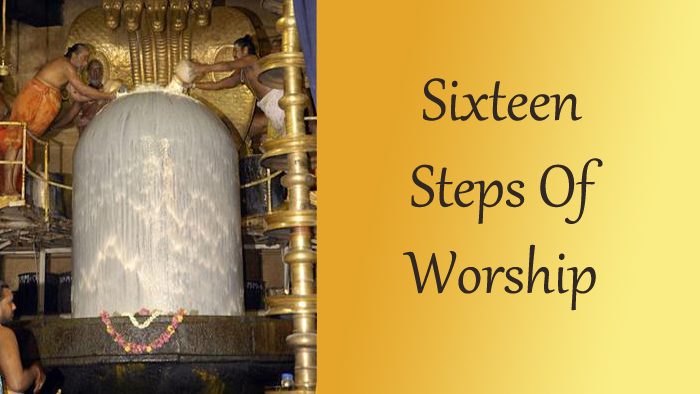Sixteen Steps Of Worship

Hindu culture is directed towards that which is transcendent and beyond. Its great achievements in times past were due to the high tension of the spirit to which our age has no parallel. The purpose of religion is spiritual awakening. Those who are awakened are delivered from the base delusions of caste and creed, of wealth and power.
Religion expresses itself in and discloses its quality by the morality which it demands. Hinduism strove victoriously against the corruption of the ancient world. Civilized backward people, transformed and purified the new elements, and preserved the tradition of the spiritual and profane sciences.
God’s Creation is not an instantaneous act or a series of acts but is an eternal process. There is no divorce between the natural and the supernatural. The two are continuous. If God is anywhere, he is everywhere.
Hinduism is to many it seems to be a name without any content. Is it a museum of beliefs, a medley of rites, or a mere map, a geographical expression? If there is not a unity of spirit binding its different expressions and linking up the different periods of its history into one organic whole. It will not be possible to account for the achievements of Hinduism’.
Hinduism is an inheritance of thought and inspiration living and moving with the movement of life itself, an inheritance to which every race in India has made its distinct and specific contribution. Its culture has a certain unity, though on examination it dissolves into a variety of shades and colors.
In Hinduism worship is an act of religious devotion directed to deities. The main purpose of this type of Worship (Puja) is two-fold. Primarily it is to uplift the five senses of the worshiper and by doing so elevate him to a higher level of consciousness that will promote good thoughts and actions. Secondarily it draws upon the Indian traditions of honoring a guest, wherein each upachara is a service to the deity who takes presence in the sculpture for the duration of the Puja.
There are 16 steps of worship of the image or symbol of the deity and meditation on a particular aspect of the deity which one wants to propitiate. The sixteen steps (Sodasopacara in Sanskrit) of worship in Hinduism are:
-
Avahana: Invoking God
-
Asana: Welcoming God to take his seat; esoterically, it is the offering of one’s heart as the throne or seat
-
Padya: Washing the feet of the symbol. Water is offered at the feet of God
-
Argya: Offering water to the hands of God
-
Acamana: offering pure water for sipping
-
Snana: Ceremonial bathing with milk, sugar, honey, and water
-
Vastra: Offering new and beautiful clothes and wrapping them around the image. This means donning oneself with divine wisdom and living in a world untainted by passion.
8. Upavita: Offering of sacred thread, which means to be filled with pure thoughts.
-
Vilepana: Besmearing the body of God with musk, red powder, and sandal paste
-
Puspa: Offering flowers, which means offering our heart
-
Dhupa: Burning of incense, which is really the burning of sins by the fire of wisdom
-
Dipa: Waving the wick light before the image
-
Naivedya: Offering of food which is specially prepared for God. We also offer Tambula (betel leaf and betel nut), Jala (water) and Madhuparka (honey/milk or fruits).
-
Pradaksina-Namaskara: Perambulation and Salutation
-
Mantra Pushpa: Offering flowers and yellow rice for the welfare of the community and world peace
-
Sayya: Offering bed to God to rest.






